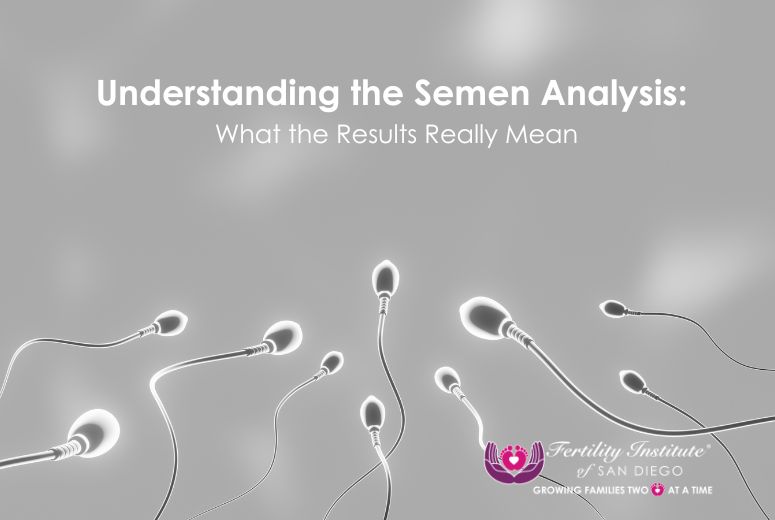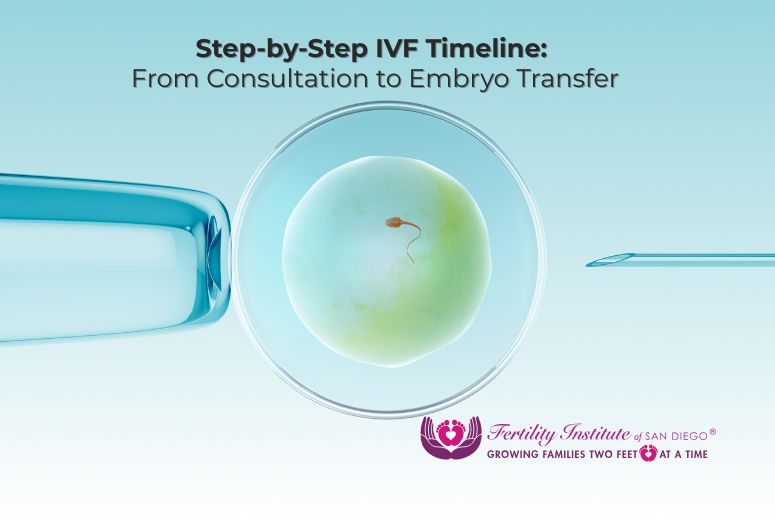When couples face challenges conceiving, the first step is often a semen analysis — a diagnostic test that reveals essential details about male fertility. While the name may sound straightforward, the insights it provides are nuanced, measuring key factors like sperm count, sperm motility, and sperm morphology. These parameters determine not just whether sperm are present, but how effectively they can reach and fertilize an egg.
“For many men, a semen analysis is the single most important test in uncovering potential barriers to conception. Understanding the results allows us to tailor a plan that addresses their unique needs,” says Dr. Minoos Hosseinzadeh, Founder and Medical Director of the Fertility Institute of San Diego.
What is a Semen Analysis and How is it Done?
A semen analysis evaluates the health and functionality of sperm through a laboratory assessment of a sample collected after a period of sexual abstinence, typically two to five days. The test measures:
- Sperm count – the total number of sperm in the ejaculate
- Sperm motility – the percentage of sperm that move effectively
- Sperm morphology – the shape and structural integrity of sperm
- Semen volume – the total fluid produced during ejaculation
- Sperm concentration – sperm per milliliter of semen
- Additional parameters like sperm DNA fragmentation or the presence of infection
At Fertility Institute of San Diego, results are interpreted in the context of the patient’s overall health, lifestyle, and reproductive goals — a hallmark of Dr. Hosseinzadeh’s one-on-one care approach.
Why the Results Matter
A semen analysis provides more than numbers. Each finding tells a story about reproductive potential:
- Low sperm count (oligospermia) may indicate hormonal imbalances, genetic conditions, or environmental exposures.
- Poor sperm motility (asthenozoospermia) can hinder the sperm’s journey to the egg.
- Abnormal sperm morphology (teratozoospermia) may affect fertilization success.
- Zero sperm in the sample (azoospermia) suggests a blockage or production issue.
These findings help pinpoint whether interventions like lifestyle changes, medication, or assisted reproductive technologies (ART) such as IVF with ICSI are appropriate.
Who Should Have a Semen Analysis?
A semen analysis is recommended for:
- Couples trying to conceive for 12+ months (6 months if the female partner is over 35)
- Men with a history of undescended testicles, varicocele, or genital trauma
- Those exposed to high heat, toxins, or radiation
- Men with chronic medical conditions such as diabetes or autoimmune disorders
- Patients considering sperm freezing before medical treatments like chemotherapy or gender-affirming surgery
When to Seek Testing
If there are signs of potential fertility issues — such as erectile dysfunction, low libido, prior reproductive surgery, or a partner’s unexplained infertility — early testing is advised.
Possible Symptoms Indicating Male Fertility Issues
- Difficulty conceiving despite regular unprotected intercourse
- Changes in sexual function or ejaculation
- Pain or swelling in the testicular area
- Reduced facial or body hair (possible hormonal changes)
Causes and Risk Factors for Abnormal Semen Analysis Results
- Genetic factors – chromosomal abnormalities, Y chromosome microdeletions
- Medical conditions – infections, hormonal imbalances, varicocele
- Lifestyle influences – smoking, excessive alcohol, drug use, poor diet
- Environmental exposures – pesticides, heavy metals, prolonged heat
- Age-related decline – gradual decrease in sperm quality after age 50
Potential Complications if Issues Are Untreated
- Prolonged infertility leading to emotional distress
- Missed opportunity for early intervention before further decline in sperm health
- More complex and costly fertility treatments required later
Prevention and Optimizing Sperm Health
- Maintain a healthy weight and balanced diet rich in antioxidants
- Limit alcohol, avoid drug use, and quit smoking
- Avoid excessive heat exposure (hot tubs, laptops on lap for extended periods)
- Exercise regularly without overtraining
- Manage stress through mindfulness or acupuncture
- Treat underlying medical conditions promptly
“Small, consistent lifestyle adjustments can yield measurable improvements in sperm quality. In many cases, these changes are the foundation of a successful fertility plan,” notes Dr. Hosseinzadeh.
Types of Treatment Available
- Lifestyle modification programs tailored to improve sperm parameters
- Hormonal therapy if deficiencies are present
- Surgery for correctable issues like varicocele
- Antibiotics for infections impacting sperm quality
- ART options such as:
- Intrauterine insemination (IUI) for mild abnormalities
- In vitro fertilization (IVF) with or without intracytoplasmic sperm injection (ICSI) for moderate to severe issues
- Use of donor sperm when necessary
Costs of a Semen Analysis
Costs vary based on the clinic and whether advanced testing (such as sperm DNA fragmentation) is included. At specialized centers like the Fertility Institute of San Diego, the analysis is paired with a comprehensive review and recommendations, ensuring results are meaningful and actionable.
FAQs About Semen Analysis
Most labs return results within 24–72 hours.
Typically, 20 million sperm per milliliter or more is considered normal.
Yes, Some men benefit from antioxidant supplements, but changes should be guided by a fertility specialist.
It may reduce the chances of sperm reaching the egg naturally, but assisted reproduction can often overcome this barrier.
Yes. While men can produce sperm throughout life, DNA quality and motility often decline with age.
If you’re ready to start your fertility journey, book a complimentary virtual consultation with Dr. Hosseinzadeh to review your semen analysis results, explore fertility options, and create a plan personalized for you. Click here to schedule.
















